
all photos courtesy BUAISOU
Some things never go out of style; just ask the four artisans behind the group BUAISOU who still use natural centuries-old Japanese indigo dyeing techniques for their creations today. A recent mention in Vogue proves that this “Japan Blue” is still highly fashionable. And judging by the vibrant hues Japanese indigo dye produces, it’s no surprise why.
Japanese indigo is incredibly versatile. Sukumo, the type used by BUAISOU, contains properties that prevent it from transferring or bleeding onto other garments, even white ones. The intensity of the indigo changes based on factors such as how long the fabric mixes with the dye or the way it is dipped into the dye vats. As a result, each object dyed with sukumo indigo is truly unique.
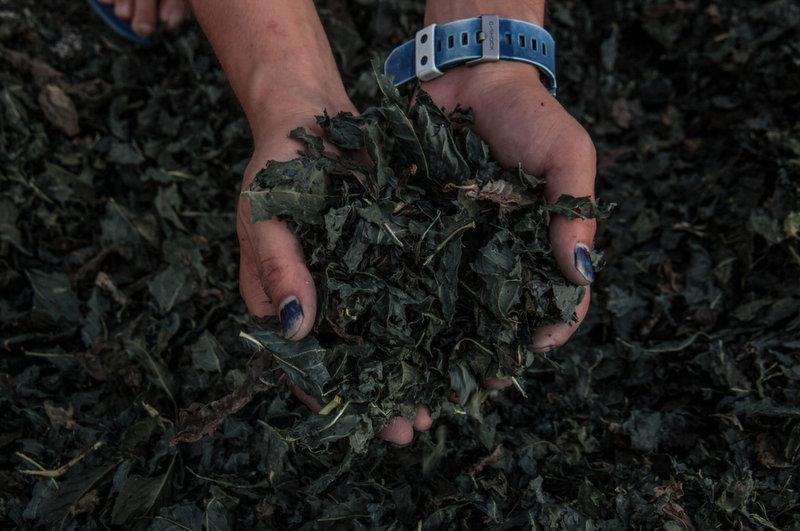
leaves from the Japanese indigo plant
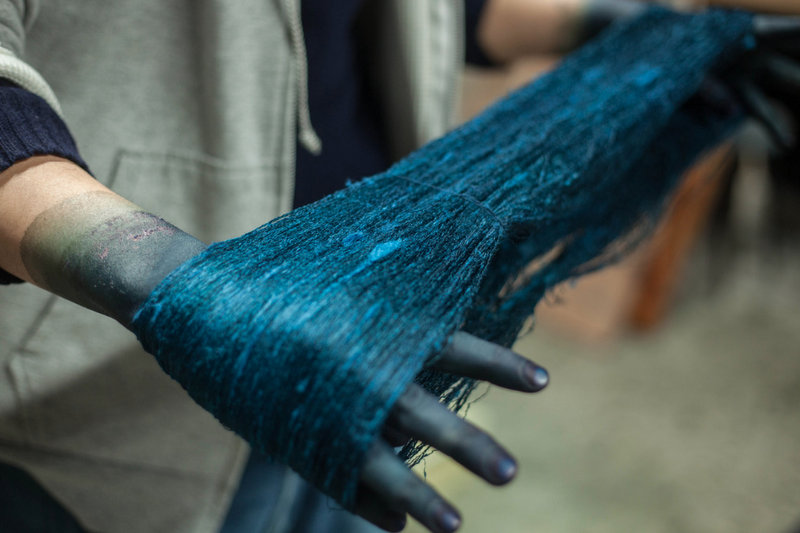
The dye is derived from the leaves of the Japanese indigo plant that is native to Tokushima prefecture, where BUAISOU’s farm and studio are located. Once harvested, the indigo leaves are dried and then fermented in a vat of ash lye, wheat bran, and calcium hydroxide. The indigo color is the result of oxidization when fabric is dipped into the dye and exposed to the air.
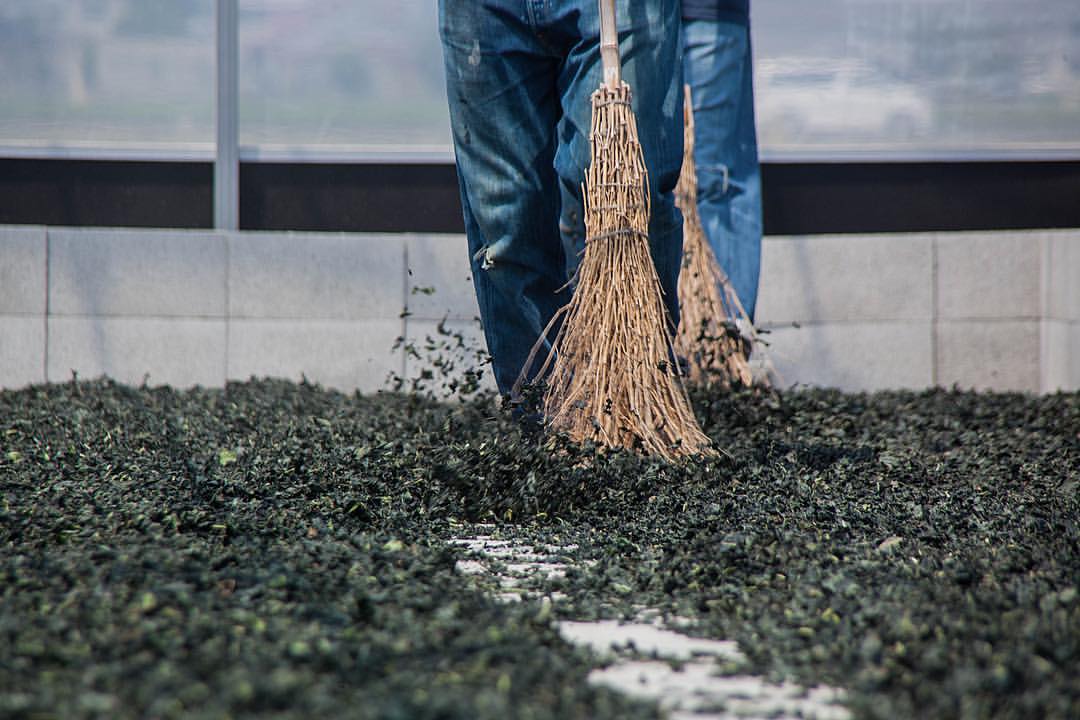
turning over the indigo leaves so that they dry evenly
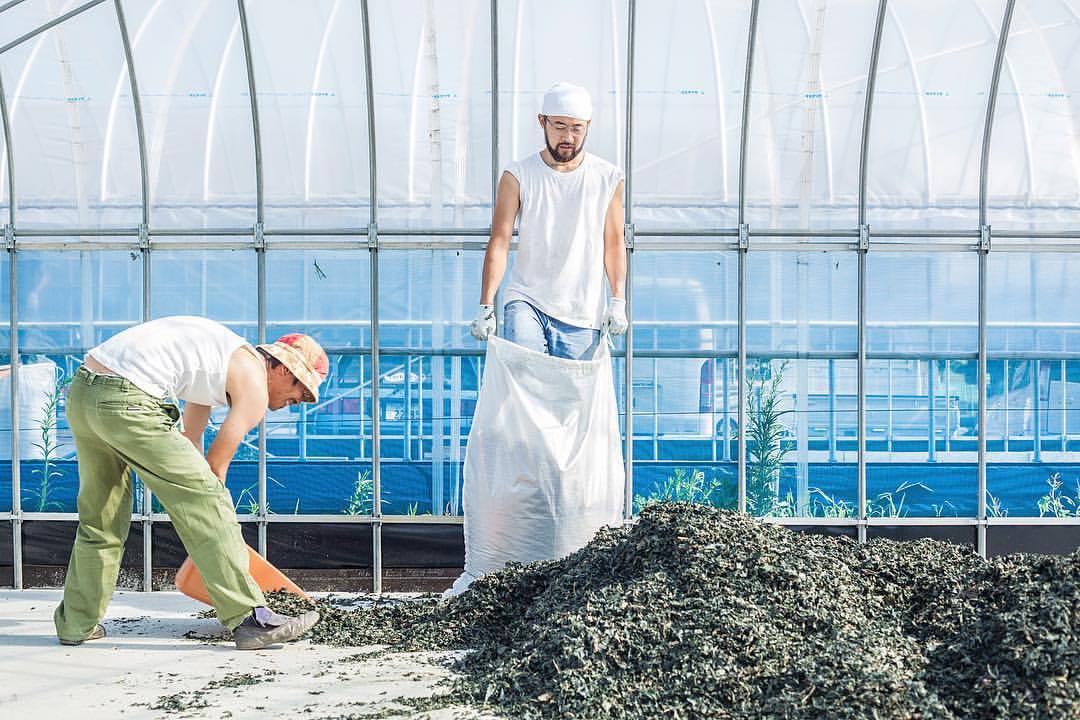
bagging the dried indigo leaves for the start of the fermenting process, nesekomi (寝せ込み)
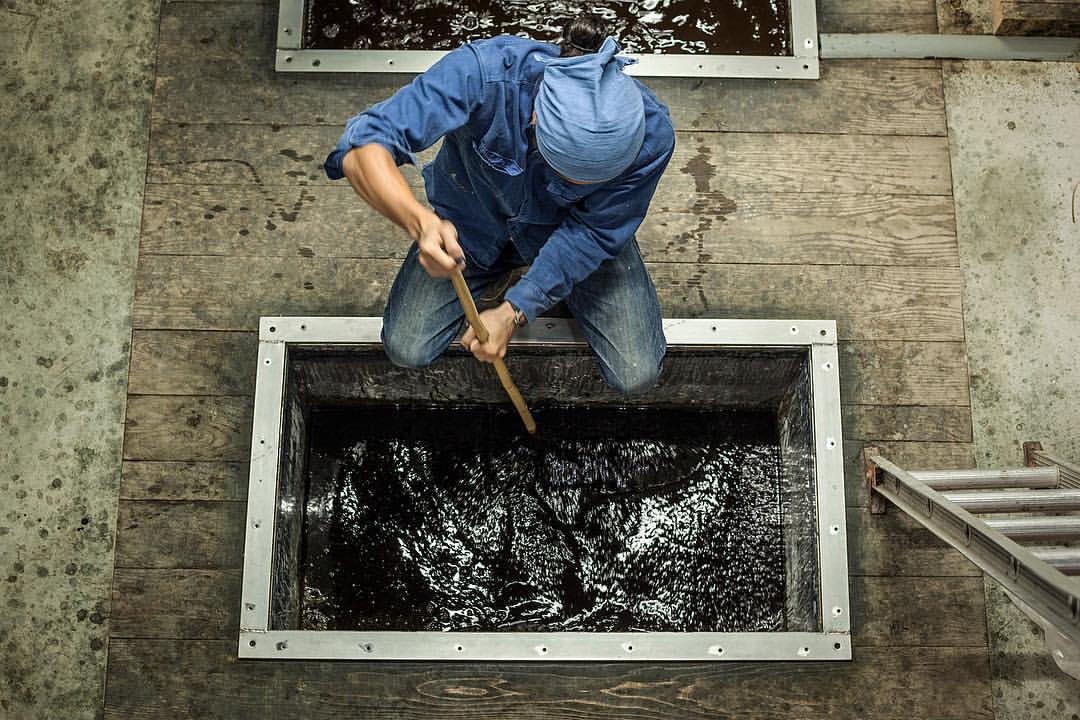
aidate (藍建て): mixing up a new vat of sukumo indigo dye
Indigo dyeing in Japan dates back to the 12th century in Tokushima prefecture on the island of Shikoku. For a large part of Japanese history, Tokushima was the center of Japan’s indigo production — until the creation of synthetic indigo in the 20th century. Now the number of indigo farms in Japan has dwindled from over a thousand to just four, including the one operated by BUAISOU. Nevertheless, the cultural significance of Tokushima’s traditional indigo dye remains: it was designated as an intangible cultural property by the Japanese government in 1968.
BUAISOU’s vision involves “preserving the tradition of Japanese indigo,” and bringing “new vitality to ‘Japan Blue’ through our artistic and functional creations.” Many of these creations can be purchased on their online store or made by hand at any of their public workshops.
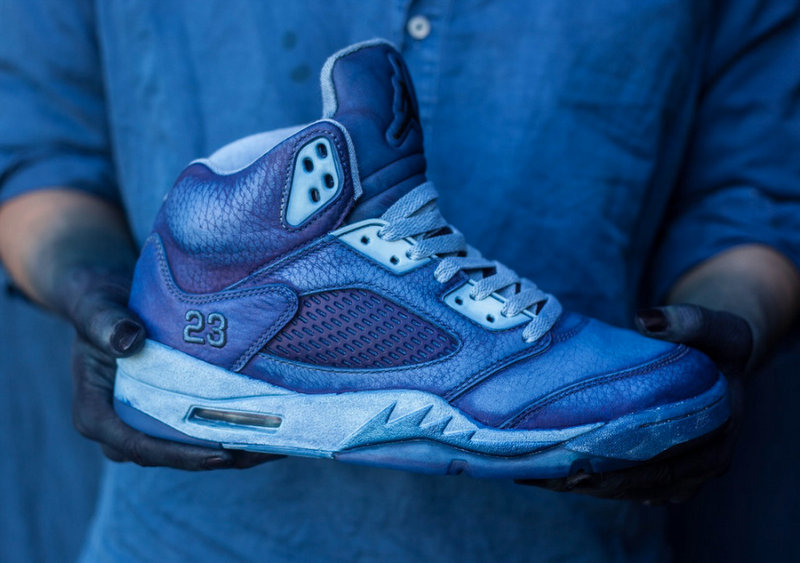
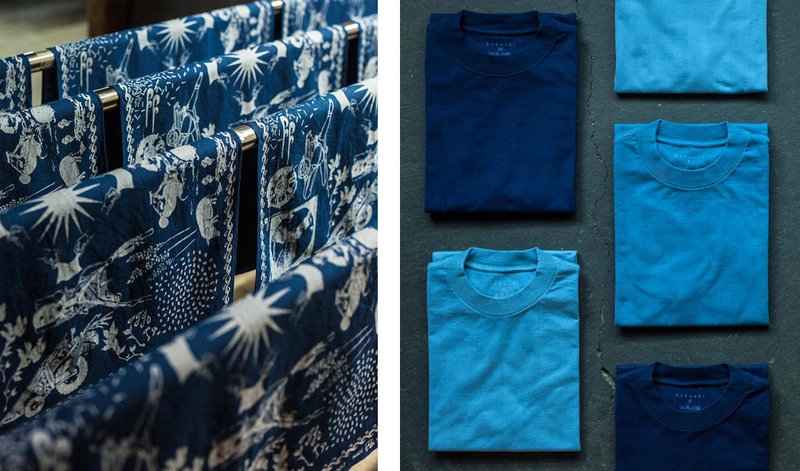
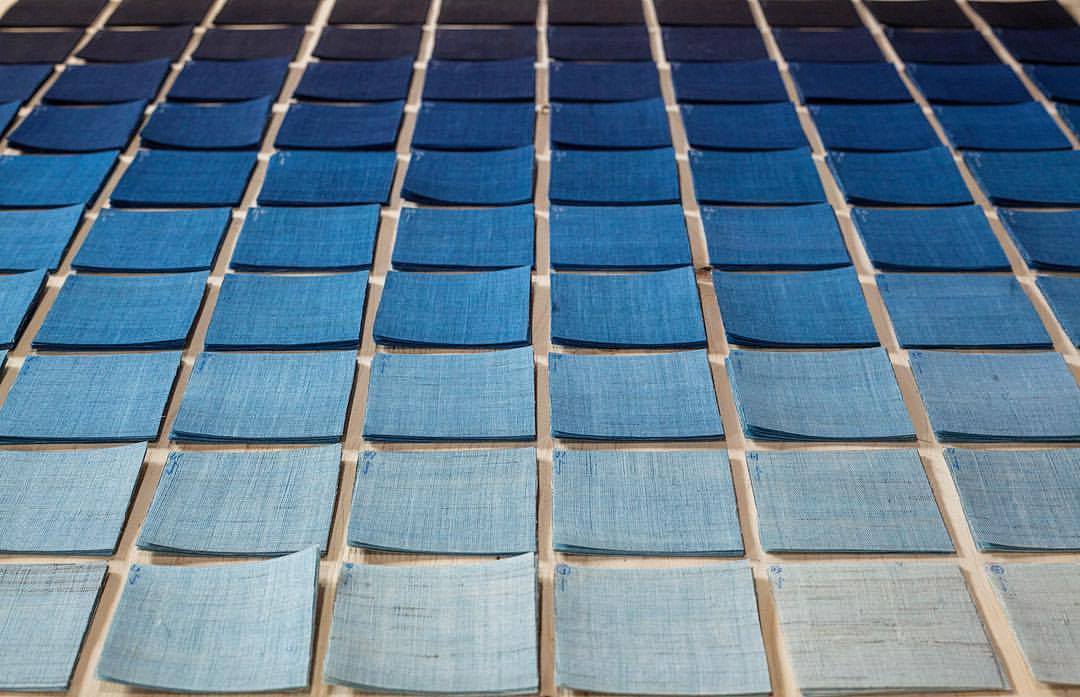
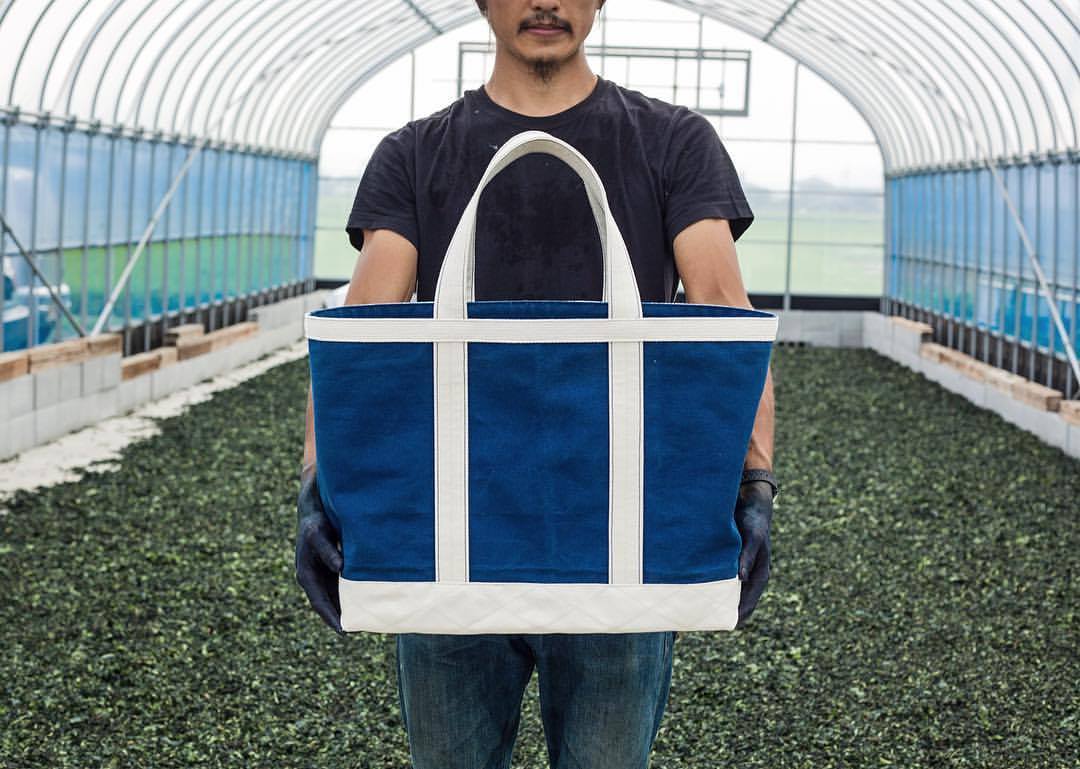


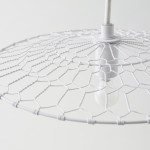

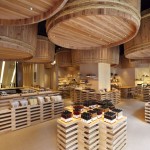



















October 31, 2017 at 7:23 pm
Wonderful article! Thank you.
November 3, 2017 at 3:49 am
“The dye is derived from the leaves of the Japanese indigo plant…”
I don’t think there is a single “Japanese indigo plant”. There are many different plants not only in Japan, but world-wide that are used to produce “Indigo” colored dyes and inks. For example the genus Indigofera in the Fabaceae family, Indigofera Tinctoria most notably (a.k.a. Indigofera Sumatra where I live in Indonesia). Then there is the genus Strobilanthes in the family Acanthaceae. Strobilanthes Cusia is notable for its use in natural dye production in more temperate zones like China and Japan.